What is driving the success of RTDs?
By Melita KielyAs RTDs continue to grow, we explore how brands are staying relevant in an increasingly competitive category.
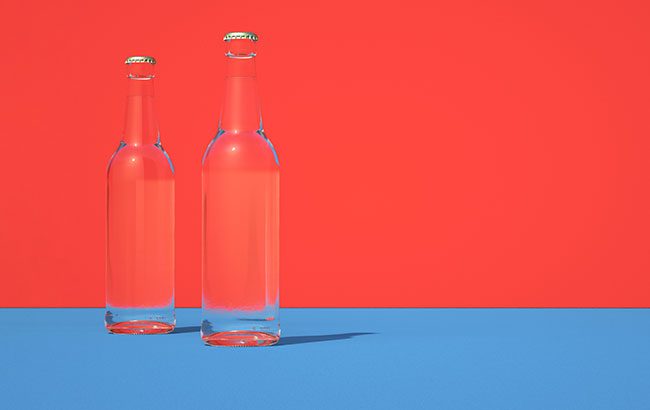
“Demand has been growing rapidly, but to really understand it, you have to look beyond the ‘traditional’ RTD category and consider anything that’s essentially ‘pour and drink’,” says Josh Rennie, co-founder of Whitebox Cocktails. Since the pandemic days of 2020, ready-to-drink (RTD) and ready-to-serve (RTS) beverages have been a force in the global drinks industry. But what is driving growth?
“Products that require minimal effort and deliver on quality,” believes Rennie. “In truth, the consumer demand has been there for years. What’s changing now is that retailers and wholesalers are starting to catch up. As they begin to understand and invest in the category, visibility increases, and with it, demand accelerates even further.”
Whereas Whitebox Cocktails is based in Edinburgh and creates products directly for its consumers, Creamy Creation is a B2B cream liqueur developer and manufacturer, whose portfolio includes RTDs, giving it a unique take on the developing RTD/RTS category. In recent years, Creamy Creation has created a swathe of new products – such as its low-ABV, cream-based, retort-free RTD concept last year – and, like Rennie, its CEO André de Haan is seeing heightened demand in the RTD space.
“We have definitely seen a steady increase in the past few years in RTS/pre-mixed formats, particularly in the coffee cocktail space, such as Espresso Martini, White Russian, or cream-based Carajillos with a twist, as well as Piña Colada,” notes de Haan. “We saw the initial wave in popularity in North America, but we are starting to see the category reaching the shores of the UK and Europe. It’s only a matter of time before it gains momentum globally.”
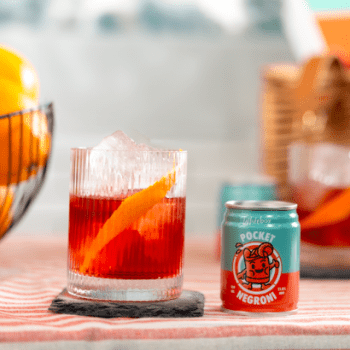
According to IWSR Drinks Market Analysis’ RTD Strategic Study, in 2021, more than 3,400 new RTD products launched in the researcher’s top 10 markets (Canada, the US, Mexico, Brazil, South Africa, the UK, Germany, China, Japan and Australia). By 2024, that figure dropped to just over 1,800. This slowdown in new product development is somewhat to be expected as the category matures. But, overall, the RTD category’s performance has been positive: recent IWSR data also shows that spirits and the RTD segment were the only categories to experience growth between 2019 and 2024.
It just goes to show how competitive the RTD/RTS space has become in a short space of time. Another player in the category is mixer brand Fever-Tree, which entered the cocktail mixer market in 2023 with a trio of product launches based on the UK’s most popular serves: Margarita, Mojito and Espresso Martini. Each expression was designed to be paired with Tequila, rum or vodka, respectively.
“We’ve been really thoughtful about how and when we entered the RTD and RTS space, because it was important to us that anything carrying the Fever-Tree name lives up to our standards for quality and provenance,” says Chrys Salter, communications manager. More recently, the company also released a Papa Salt X Fever-Tree Blood Orange Spritz RTD can, a non-alcoholic Mediterranean G&T, and an Italian Orange Spritz.
“There’s no doubt it’s a competitive space, but we focus on what sets Fever-Tree apart: high-quality ingredients, well-crafted drinks, and a premium positioning,” Salter continues. “We also partner with brands that share our philosophy on quality and provenance, which helps us to create products that feel authentic and elevated. On top of that, we ensure the story behind each product, from the sourcing to the serve, is clear and relevant to today’s consumers. That’s how we build loyalty and maintain a strong point of difference as the category continues to grow.”
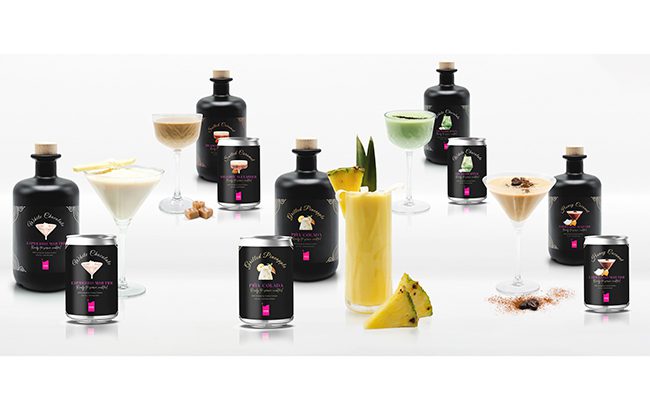
If ease of use and quality are key contributors to the success of RTDs, what exactly does this entail?
For Creamy Creation, de Haan explains: “Historically, some of the first RTSs on the market tended to be either quite alcohol-forward or flavour-forward. Finding that sweet spot is key. Finding a balance of all the ingredients is a true skill set. There is a lot of added complexity to it, as any creamy product needs to remain organoleptically, physically and microbiologically stable. Many factors play a role, including ABV level, mouthfeel, ingredients etc, which is why every product and process is different.
“The right ingredients are critical for taste and quality, starting from a premium base, whether that is fresh local dairy cream or a smooth plant-based compound. The ingredients can also affect the emulsion and physical stability, so we have strict criteria for all of our ingredients. We partner with a small number of well-established, reliable and high-quality vendors, which allows us to source the best ingredients.”
Opportunities in the on-trade
This pursuit of quality is what also lends the category well to the on-trade – which was perhaps not the most obvious channel for the category at first glance. However, De Kuyper Royal Distillers has found success in both on-trade and off-trade settings with its range of RTD and RTS products – including cocktails on draught.
“We have seen strong growth in both on- and off-trade, as consumers increasingly seek bar-quality cocktails at home and in venues,” says Godelief van Erve, global marketing director, De Kuyper Royal Distillers. “Premium RTS cocktails, especially in Western Europe, have become particularly popular, with our De Kuyper RTS range leading the market in the Netherlands.
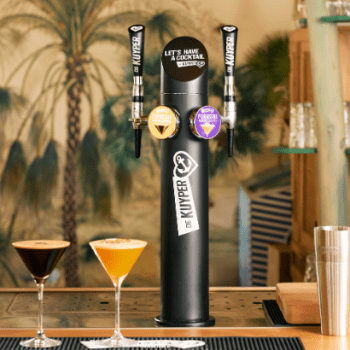
“We see growing demand across different segments and geographical areas. For instance, ready-to-serve cocktails for at home are growing in more mature cocktail markets where consumers are increasing in-home consumption of cocktails. Draught cocktails are especially popular in high-volume outlets and batched cocktails for the on-trade are a great solution – for example, for outlets with less-skilled staff or where the staff is focusing their time more on food than beverages.”
Whitebox Cocktails’ Rennie is also encouraged by the opportunities in the on-trade for RTD cocktails. “We’ve seen it work,” he says. “Many in the on-trade think that serving pre-mixed cocktails is a downgrade compared with what else is available to consumers, but in reality, most people rarely get access to good cocktails. They revert to brands like Guinness, which succeeds because it is consistent in quality and taste, and it’s everywhere.
“Cocktails are usually the opposite: they are inconsistent and, outside of the top bars, they are often not a viable choice. Venues charge £10 to £15 [US$14-US$20] for poor drinks and expect it to work. A well-served Whitebox cocktail can outperform most cocktail menus instantly. It is a huge opportunity for Whitebox if taken seriously.”
Market-specific approach
Market-wise, the UK has had a strong reception to Fever-Tree’s RTD offerings, Salter says. “What’s really encouraging is the scale we’ve reached so quickly; we’re now in over 8,000 retail points in the UK – more than double from last year – and we’ve also expanded into more than 2,000 on-trade locations,” Salter explains. “It’s clear we’re hitting the right note with both consumers and our trade partners.
“We’re also tailoring our approach internationally, with market-specific flavours like a Caesar mixer in Canada and Bloody Mary in the US. That local focus has helped us build positive momentum globally.”
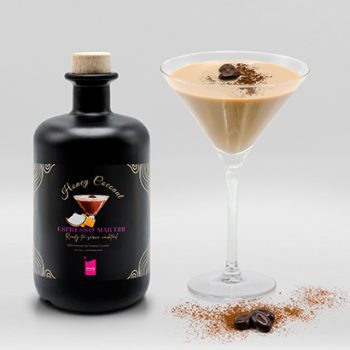
With data indicating that consumers are drinking more mindfully than ever before, the RTD/RTS category taps into this perfectly. The ability to offer everything from alcohol-free pre-made cocktails to full-strength, high-ABV drinks is all part of the appeal. But is there an optimum ABV when it comes to RTD options?
For Creamy Creation’s de Haan: “The optimum ABV is different for each brand and product. Depending on the serving occasion and packaging, some are better at a lower ABV, while other classic cocktails demand a higher ABV. Our products can be done at a lower ABV (at 5% ABV or higher) with heat treatment, or between 12.5% and 20% ABV without any heat treatment.”
IWSR data predicts the RTD category could command a 3% share of the global alcohol sector by 2028, taking market share from beer and wine. All the indications suggest a bright future for the sector, provided it continues to deliver on creativity, consistency and quality. “I think it certainly has staying power over the next few years,” notes Creamy Creation’s De Haan. “However, as everything does, this trend will inevitably evolve over time.”
The evidence seems clear: the RTD movement has well and truly arrived.
Related news
‘Modernised’ RTD laws could generate $10.9m in Quebec
